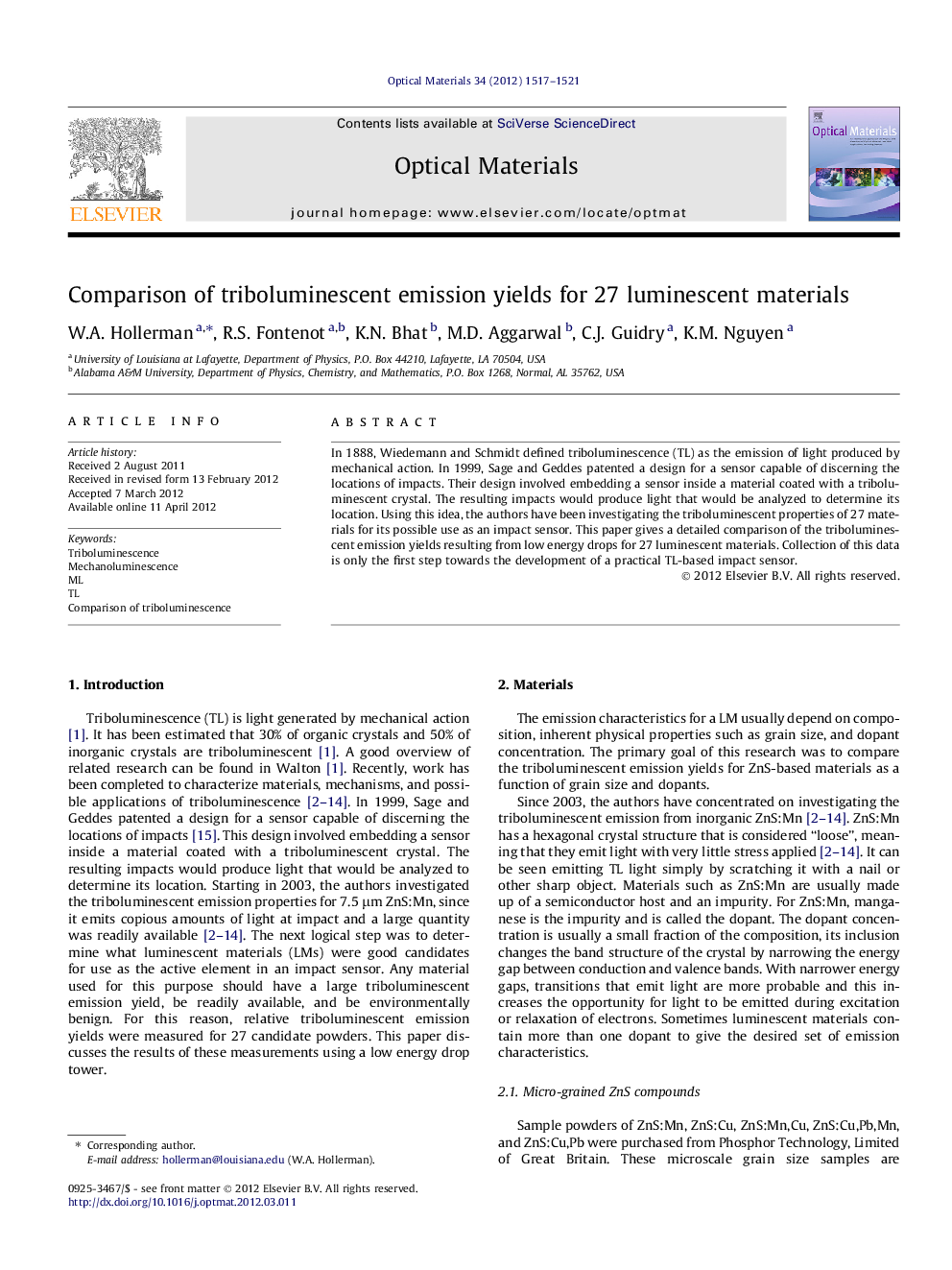| Article ID | Journal | Published Year | Pages | File Type |
|---|---|---|---|---|
| 1495693 | Optical Materials | 2012 | 5 Pages |
In 1888, Wiedemann and Schmidt defined triboluminescence (TL) as the emission of light produced by mechanical action. In 1999, Sage and Geddes patented a design for a sensor capable of discerning the locations of impacts. Their design involved embedding a sensor inside a material coated with a triboluminescent crystal. The resulting impacts would produce light that would be analyzed to determine its location. Using this idea, the authors have been investigating the triboluminescent properties of 27 materials for its possible use as an impact sensor. This paper gives a detailed comparison of the triboluminescent emission yields resulting from low energy drops for 27 luminescent materials. Collection of this data is only the first step towards the development of a practical TL-based impact sensor.
► Triboluminescent properties of 27 materials were measured. ► Triboluminescent emission yields resulting from low energy drops were measured. ► EuD4TEA sample doped with DMMP has the largest tested triboluminescent yield.
